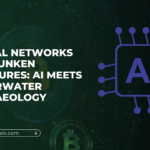Optimize Your Business with Modern IT Infrastructure
Cracks Geek – Optimize Your Business with Modern IT Infrastructure. Did you know 94% of tech leaders plan to spend more on IT next year? Despite economic worries, businesses must keep up with fast changes. Modern IT lets you meet customer needs and stay ahead of rivals.
Using cloud computing and other IT tools, your business can grow without limits. It can also work better and perform better overall.
Knowing how IT affects your business is key. It impacts everything from storing documents to network speed. So, making your IT better is now a must in the digital world.
Understanding Modern IT Infrastructure
Modern IT infrastructure is key to success in today’s digital world. It includes the parts needed to manage operations well. This includes data management and network security. Knowing what makes up modern IT infrastructure helps improve your business.
Definition of IT Infrastructure
IT infrastructure is all the hardware, software, and networks that help run an organization’s IT. It includes servers, storage, networking gear, operating systems, apps, and databases. Today, it’s about creating a flexible and growing IT setup that supports goals and keeps data safe.
Core Components of Modern IT Infrastructure
The heart of modern IT infrastructure has several key parts. Hardware includes servers, storage, and routers. Software is made up of operating systems and databases. Networking tools like routers and switches connect systems, helping with communication and teamwork.
Data centers house all these parts in a controlled space. They are crucial for reliable and efficient IT operations. Each part is important for using the latest technology and keeping networks secure.
Importance of Optimizing Your IT Infrastructure
In today’s fast-paced world, optimizing your IT infrastructure is key to staying ahead. A strong IT infrastructure boosts efficiency and opens doors for innovation and growth. Understanding its importance can change how your organization works and grows.
Enhancing Operational Efficiency
To boost operational efficiency, you need a streamlined IT setup. Automating processes can greatly increase productivity. Centralizing data management through technology makes collaboration and decision-making faster.
Using cloud computing for scalable systems adds flexibility. This lets your business adapt to changing needs.
Driving Innovation and Growth
An optimized IT infrastructure is the base for innovation and growth. Cloud computing gives you scalable resources for new product launches. It also lets you use advanced technologies like AI and IoT for deep data analysis.
This leads to smarter business strategies. You can quickly respond to market needs, putting your business in a strong position to seize new opportunities.
Identifying the Signs of IT Sprawl
It’s key to spot IT sprawl signs to keep your IT running smoothly. Catching these signs early helps avoid bigger problems. Look out for integration issues, shadow IT, and systems that aren’t used much but cost a lot to maintain.
Integration Problems and Shadow IT
When you try to mix different tech and services, integration problems can pop up. This makes IT work harder and less efficiently. Shadow IT, where non-tech people manage their own tech, adds to the mess. It can lead to security risks and make following rules harder.
So, it’s important to check your IT setup often.
Low Utilization and Complicated Maintenance Agreements
Seeing systems or apps that aren’t used much is a red flag. It might mean your tech is outdated or you have too many licenses. This can cost you a lot of money.
Also, dealing with complex maintenance deals can make things worse. It can lead to high costs for systems that don’t get used much. Knowing how much IT costs per person can help you find where you’re wasting money. Simplifying your maintenance deals can make your IT work better and save you money.
Strategies for Modern IT Infrastructure Optimization
To boost your organization’s productivity, focus on several key strategies. These include embracing new solutions, streamlining operations, and cutting costs. This approach will not only make your IT better but also more secure.
Adopting Cloud Computing Solutions
Switching to cloud services can save a lot of money on hardware. It makes your operations more flexible. Cloud solutions also let you work together in real-time and access data from anywhere.
Leveraging Virtualization and Containerization
Virtualization lets you use servers for more than one task. This cuts down on hardware costs and energy use. Containerization makes apps run smoothly and securely. These tools help you use resources better and manage them easier.
Implementing Automation and AI
Automation reduces errors and saves time. AI boosts security by watching network traffic and spotting problems fast. Adding automation and AI to your IT makes it faster and safer.
Measuring Success in IT Infrastructure Optimization
It’s crucial to measure the success of your IT infrastructure optimization. This ensures your organization meets its goals effectively. By focusing on key performance indicators, you gain insights into your infrastructure’s efficiency and effectiveness. These metrics help you spot areas for improvement and make informed decisions.
Key Performance Indicators to Monitor
Important metrics include server uptime, network latency, data center performance, and user satisfaction. Tracking these regularly gives a clear view of your IT infrastructure’s support for business operations. Statistics show that 71% of IT leaders measure success through increased efficiency, and 67% focus on optimized resource use.
Minimizing downtime is also key, as major failures can cost businesses thousands per minute.
Regular Audits and Assessments
Regular audits are essential to stay ahead of potential issues. They help find weaknesses and areas needing optimization in your IT infrastructure. Evaluating performance, capacity, security, and compliance ensures your infrastructure meets organizational goals.
Proactive monitoring and assessments lead to quicker issue resolution. This boosts productivity across all business units.
Conclusion: Optimize Your Business with Modern IT Infrastructure
Optimizing your IT infrastructure is key for business success. It helps you stay ahead in the market. By using software-defined architectures and cloud computing, you can handle changing needs better.
Seeing the signs of IT sprawl early helps you improve operations. You can then use new technologies like SaaS and Network-as-a-Service. These tools make it easier to manage resources, creating a strong IT setup that meets your goals.
Embracing modern IT infrastructure brings big changes. Keep track of important metrics and review your strategy often. This approach boosts your current abilities and opens doors for future growth and innovation.
FAQ: Optimize Your Business with Modern IT Infrastructure
What is modern IT infrastructure?
Modern IT infrastructure includes hardware, software, and networks. It helps manage and run an organization’s IT. It’s key for better efficiency and growth.
Why is optimizing IT infrastructure important?
Optimizing IT infrastructure cuts down on waste and boosts performance. It saves money, encourages new ideas, and keeps your business ahead in the digital world.
How can cloud computing benefit my business?
Cloud computing lowers costs and gives you flexible, scalable resources. It makes operations smoother and more efficient.
What are some common signs of IT sprawl?
Signs of IT sprawl include trouble integrating systems, hidden IT, unused resources, and complex maintenance deals. These can raise costs and make things less efficient.
What strategies can I use to optimize my IT infrastructure?
To optimize, consider cloud computing, virtualization, and containers. Also, use automation and AI to make processes better and safer.
What key performance indicators should I monitor?
Watch server uptime, network speed, data center performance, and user happiness. These show if your IT meets business needs.
How often should I conduct IT audits?
Do IT audits often to find weak spots. This ensures your setup matches your goals. It keeps performance, security, and compliance up to par.





